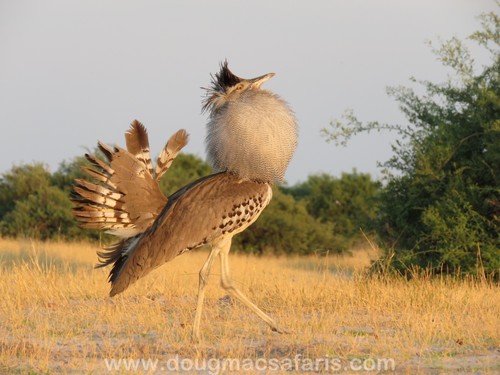
Kori Bustard
The Kori Bustard, Africa's terrestrial giant, graces savannas with its massive presence. Males perform dazzling displays to woo mates, showcasing their inflated throats. Expertly camouflaged, they blend into arid grasslands, playing a crucial ecological role as omnivores, controlling insect populations and dispersing seeds.
26-28 years
Lifespan
2.993 - 18.016 kg
Weight
Length: 61 - 122 cm; Height: 69 - 137 cm
Size
Brown, Grey, Black, White
Color
Near Threatened
Conservation Status
Decreasing
Population Trend
Characteristics
The Kori Bustard (Ardeotis kori) is one of the heaviest flying birds, native to Africa's dry savannas and grasslands. It is known for its impressive size, with males weighing up to 18 kg (40 lbs). This species exhibits striking camouflage plumage and performs elaborate courtship displays, inflating its throat sac.
Distribution Range of the Kori Bustard
The Ardeotis kori, commonly known as the Kori Bustard, is native to the savannahs and semi-arid regions of sub-Saharan Africa. Its geographical distribution spans across several countries including Botswana, Namibia, South Africa, Ethiopia, Kenya, Tanzania, and Zimbabwe.
Kori Bustard's Habitat
Environmental Conditions
Kori Bustards typically inhabit open grasslands, scrublands, and lightly wooded savannahs. These environments are characterized by semi-arid conditions with moderate rainfall, and they often have scattered trees and shrubs.
Ecological Niche
The Kori Bustard occupies a niche as a ground-dwelling bird that feeds primarily on a diverse diet of insects, small vertebrates, and plant material. It is well-adapted to its environment, often blending with the tall grasses and using its large size to deter predators. The species is known for its preference for open spaces where it can easily spot threats and display its elaborate courtship behaviors.
Copyright @ Nature Style Limited. All Rights Reserved.
 English
English